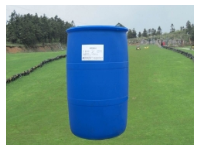With the increasingly prominent environmental problems of chemical surfactants, the application of biosurfactants has attracted more and more attention. In the late 1980s, the development of biosurfactants by bioengineering technology has become a new topic in the field of international bioengineering. In the past 20 years, with the rapid development of modern biotechnology and the application of biosurfactants in oil exploitation, environmental protection, pharmaceutical, food processing and other aspects, people have a strong interest in the use of this technology in the industrial field. The enhancement of global environmental awareness has promoted the trend of biosurfactants replacing chemical surfactants.

Biosurfactants have a variety of sources, chemical structures and uses. At present, people generally classify biosurfactants according to their chemical structures. Rhamnolipid and rhamnolipid are one of the most important biosurfactants in China and abroad.
Many pure surfactants are tested to be low irritant and high mildness. However, due to many reasons such as raw materials, processes and side reactions, some impurities will be brought into the products, such as unreacted raw materials, by-products, toxic colored substances, etc, The application of these surfactants as high-quality, mild varieties in cosmetics and personal hygiene products is limited.
Small molecular surfactants are easy to cause percutaneous penetration and cause great irritation to the skin; while macromolecular surfactants are not easy to have their own transdermal penetration problems, and due to the influence of macromolecular secondary and tertiary structures, polar groups and hydrophobic branched chains are not easy to directly and strongly interact with skin or hair, so they are relatively mild. At present, the surfactant and emulsifier used in cosmetics and personal hygiene products tend to develop towards macromolecules and polymers, or to modify natural polymers, such as modified starch, peptides, hydrolyzed cellulose and gum, or synthetic polymers, such as polyamide or polyacrylic acid as emulsifiers and thickeners for cosmetic emulsions. It has a high efficiency, low stimulation and mild effect.